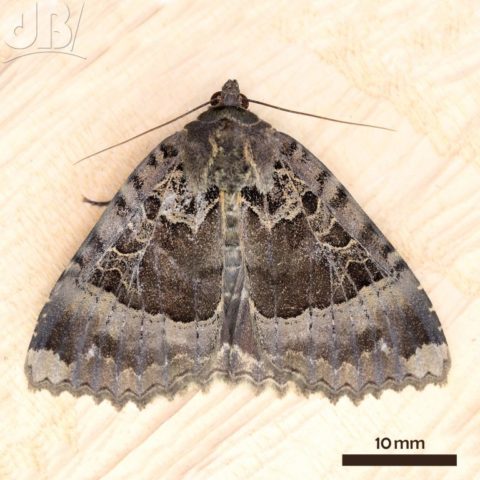As the summer moves on, so the diversity and numbers of moths (Lepidoptera) active each night grows. We’re coming to the end of the first week of July and already one night’s haul has passed 200 specimens of 40 different species, logged, identified, and the interesting and ones new to the garden photographed.

160+ moths of more than 30 species were drawn to the actinic light of the scientific moth trap on the night of 5th July. I had heard and possibly seen an Old Lady (Mormo maura) in the garden a few nights ago, but this morning she was nestled in one of the egg trays in the trap awaiting her photocall. This species is large (30mm along the edge of the forewing). Far bigger than the many micros that I didn’t log in detail. You can see the morning logs for the leps here.
The Old Lady, also known as a Black Underwing, and in an earlier time, the Grave Brocade, was accompanied by two Privet Hawk-moths (the UK’s largest species of moth) and a single Elephant Hawk-moth both of which I’ve photographed and written about here previously. The Old Lady is not commonly drawn to light according to the UK Moths site, although my Collins lep guide says they will often come indoors attracted by the light. Regardless, this one definitely was drawn to the light and settled in for the night. It had a chunk missing from its left forewing, so I did a little ‘shopping to tidy her up.
Why is this noctuid, or owlet, moth, called Old Lady, you are probably asking? Well, the sombre answer is that the dark and funereal colours of this moth reminded those who named it of the penchant of elderly widows of Europe for wearing black. This was long before the Victorian era though.
The delicate patterning of the moth’s wings, according to Peter Marren in his book of moth names, Emperors, Admirals, and Chimney Sweepers, resembles that kind of black lace. Intriguingly, adds Marren, the scientific name – Mormo maura – The first part of the name is the name of a hideous she-monster used by Greek parents, apparently, to encourage errant children to behave. “Mormo will come and bite you, if you don’t behave! The second part of the name alludes to the Moors. In Holland, the Old Lady, Marren tells us, becomes a black orphan – Zwart weeskind.